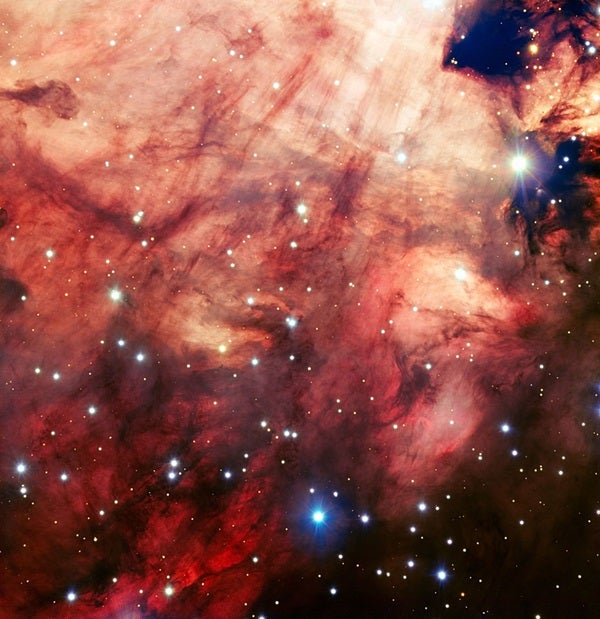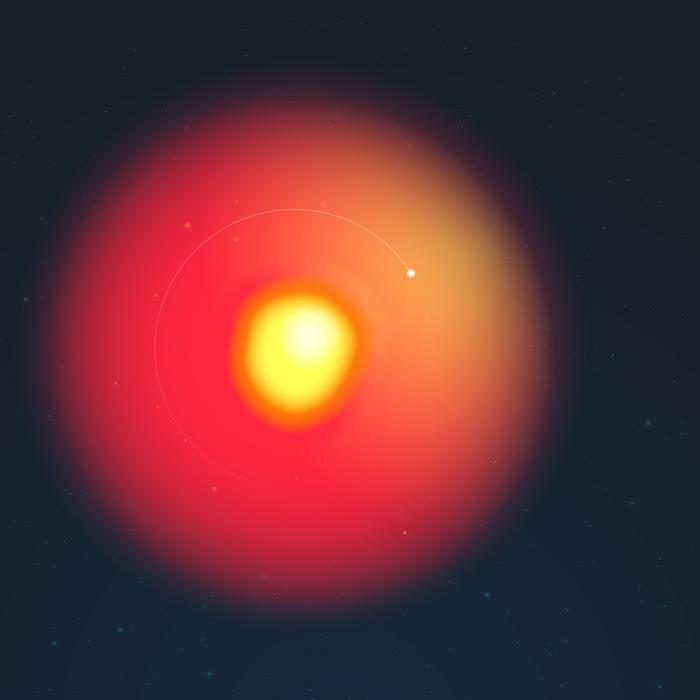The colorful gas and dark dust in the Omega Nebula serve as the raw materials for creating the next generation of stars. In this particular section of the nebula, the newest stars on the scene — dazzlingly bright and shining blue-white — light up the whole ensemble. The nebula’s smoky-looking ribbons of dust stand in silhouette against the glowing gas. The dominant reddish colors of this portion of the cloud-like expanse arise from hydrogen gas, glowing under the influence of the intense ultraviolet rays from the hot young stars.
The Omega Nebula goes by many names, depending on who observed it when and what they thought they saw. The other titles include the Swan Nebula, the Horseshoe Nebula, and even the Lobster Nebula. The object has also been cataloged as M17 and NGC 6618. The nebula is located about 6,500 light-years away in the constellation Sagittarius the Archer. A popular target of astronomers, this illuminated gas and dust field ranks as one of the youngest and most active stellar nurseries for massive stars in the Milky Way.
The image was taken with the FOcal Reducer and Spectrograph (FORS) instrument on Antu, one of the four Unit Telescopes of the VLT. In addition to the huge telescope, exceptionally steady air during the observations, despite some clouds, also helped make the crispness of this image possible. As a result, this new picture is among the sharpest of this part of the Omega Nebula ever taken from the ground.










